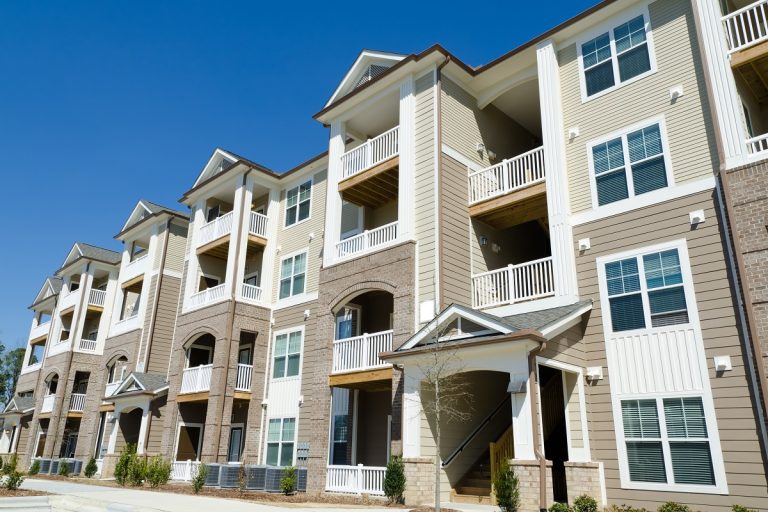- Establish strong systems and processes to streamline operations and reduce the chances of errors.
- Prioritize tenant communication and satisfaction by proactively responding to inquiries, maintaining transparency, prioritizing problems, and encouraging feedback.
- Implement a proactive maintenance strategy by regularly inspecting properties, creating a schedule, and promptly responding to requests.
- Stay on top of financial management by accurately tracking rent payments, expenses, and cash flow.
- Seek guidance from a real estate lawyer to ensure compliance with local laws and regulations.
Managing multiple rental properties can be lucrative and rewarding but comes with its fair share of challenges. From tenant management to maintenance and financial aspects, juggling multiple properties requires efficient organization and strategic planning. This guide will provide five essential tips for managing multiple rental properties effectively. Implementing these tips allows you to streamline operations, ensure tenant satisfaction, and maximize investment returns.
1. Establish Strong Systems and Processes
Managing multiple rental properties requires a systematic approach. Develop standardized systems and processes that can be applied across all your properties. This includes procedures for tenant screening, lease agreements, rent collection, maintenance requests, and property inspections. Utilize property management software or tools to automate and streamline these processes, making them more efficient and reducing the chances of errors or oversights. By establishing strong systems, you can maintain consistency across your properties and save time and effort in managing day-to-day operations.
2. Prioritize Tenant Communication and Satisfaction

Good tenant relationships are the cornerstone of successful property management. Happy tenants are more likely to renew their leases and take good care of the property, reducing turnover and vacancy rates.
Here are tips for prioritizing tenant communication and satisfaction:
Be Proactive
Ensure you promptly respond to tenant inquiries and clearly communicate how their issues are addressed. Encourage tenants to ask questions or concerns, and remind them that you’re there to help. Have contact information available online and encourage feedback through surveys or other means. When possible, make yourself available for walk-throughs or virtual meetings with tenants.
Maintain Transparency
Tenant satisfaction often depends on open and frequent communication from property managers about the status of any given issue or request. Establish trust with your tenants by providing honest updates on progress and any potential delays. Be available to answer questions or address concerns throughout the process.
Prioritize Problems
Maintenance requests should be addressed promptly, especially if they involve a safety hazard or other urgent matter. Ensure you have procedures for handling maintenance requests quickly and efficiently, including a system for prioritizing them based on urgency.
Encourage Feedback
Encouraging tenant feedback can give you insight into how they view their living experience and identify areas needing improvement. Get your tenants involved by hosting events or surveys which allow them to provide input on property changes or renovations, helping you create an even better living environment.
3. Implement a Proactive Maintenance Strategy
Maintenance is a critical aspect of property management. Instead of waiting for issues to arise, adopt a proactive maintenance approach. Regularly inspect your properties to identify potential problems before they escalate. Create a maintenance schedule to address routine tasks such as HVAC servicing, plumbing checks, and landscaping. Promptly respond to maintenance requests from tenants to address any issues promptly. Consider hiring reliable contractors or building a network of trusted professionals who can provide quality and timely services. By prioritizing maintenance, you can prevent major issues, maintain property value, and provide your tenants with a safe and comfortable living environment.
4. Stay on Top of Financial Management

Managing multiple rental properties requires diligent financial management. Keep accurate and up-to-date records of income and expenses for each property. Utilize property management software or accounting tools to track rent payments, expenses, and cash flow. Set aside funds for future maintenance and repairs to avoid any financial surprises. Regularly review your rental rates to ensure they are competitive and reflect the property’s value. Consider working with a professional accountant who specializes in real estate to help you manage your finances effectively and maximize your tax deductions.
5. Seek Guidance from a Real Estate Lawyer
Navigating legal aspects of property management can be complex, especially when dealing with multiple properties. It’s essential to have a trusted real estate lawyer who can provide guidance and advice. Consult with a lawyer to ensure you comply with local laws and regulations, especially regarding landlord-tenant relationships, lease agreements, eviction processes, and fair housing practices. A real estate lawyer can also assist you in drafting or reviewing lease agreements, handling disputes, and providing legal representation if needed. Having a reliable legal professional can help protect your interests and ensure your property management practices are per the law.
To Wrap It Up
By following these five tips, you can effectively manage multiple rental properties and set yourself up for success. Establish strong systems and processes, prioritize tenant communication and satisfaction, implement a proactive maintenance strategy, stay on top of financial management, and seek guidance from a real estate lawyer. With efficient management practices, you can maximize your rental income, maintain tenant satisfaction, and achieve long-term success in your property investment ventures.




